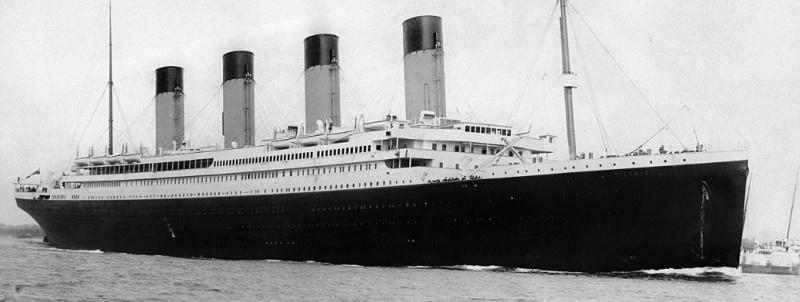 One 109 years ago today, the RMS Titanic slipped below the icy waters of the North Atlantic after striking an iceberg. Close to 1,500 passengers and crew were lost, making the sinking the deadliest peacetime sinking of a passenger liner in history.
One 109 years ago today, the RMS Titanic slipped below the icy waters of the North Atlantic after striking an iceberg. Close to 1,500 passengers and crew were lost, making the sinking the deadliest peacetime sinking of a passenger liner in history.
The Titanic had sailed from Southampton, UK five days earlier on April 10th. Coincidentally, 51 years later, on April 10, 1963, the nuclear attack submarine USS Thresher sank during deep-diving tests killing all 129 crew and shipyard personnel aboard. Also coincidentally, the Thresher sank relatively close to the wreck of the Titanic, although when the submarine sank, no one knew quite how close.
The Thresher was not the only submarine wreck in the general vicinity. The 1960s were difficult years for American submarine service. Five years after the loss of the Thresher, in May 1968, the Skipjack-class nuclear-powered submarine, USS Scorpion, was lost with her entire 99-person crew, roughly 1,600 miles from where the Thresher sank. The wreck of the Titanic was believed to lay between the known positions of the wrecks of the two American submarines, but no one knew exactly where.
Oceanographer Robert Ballard wanted to locate the legendary passenger liner. He met with the Navy in 1982 to request funding to develop the robotic submersible technology he needed to find the Titanic.
The Navy wasn’t interested in the Titanic, but it did want to survey the wrecks of the Scorpion and the Thresher to determine if the reactors were leaking radiation into the sea. They agreed to allow Ballard to search for the Titanic for a short period once he had completed the primary mission of surveying the submarine wreckage. Indeed, the search for the Titanic became the cover story for the otherwise top-secret mission.
“I suggested that because the Titanic was between the Thresher and Scorpion, maybe tell the world I am looking for the Titanic,” Ballard said.
In 1985 a Franco-American expedition led by Jean-Louis Michel and Robert Ballard surveyed the wreckage of both submarines and determined that the reactors were intact. With only 12 more days available to search, Ballard located first the debris field and then the wreck of the RMS Titanic.
“The Navy never expected me to find the Titanic, and so when that happened, they got really nervous because of the publicity,” Ballard said.
“But people were so focused on the legend of the Titanic they never connected the dots.”
The true nature of the expedition that discovered the Titanic would remain a secret for more than another two decades.
Last September, the Navy began releasing documents from the investigation into the Thresher disaster.

It sometimes seems that no deed goes unpunished, but in the long run surely the Navy would have basked in the optics of “we’d like to know the condition of these reactors?”
Did anybody doubt the reactors were lying on the bottom? Diligent attention doesn’t look bad– over the long haul, which is what counts.
Secrecy, obfuscation, fog cost opportunity, let alone money etc. Should be dispensed jealously.
OTOH, maybe it wasn’t the reactors that were of interest. Wheels within wheels, man. 😉
I think it would have been some what comical if they had found the subs and the propellers were still turning after all this time.
Ballard was also looking for the SS Central America and the one Billion = Gold on board but was beaten out by another team during the same time period. Read about it in the book “The Ship of Gold in the Deep Blue Sea”. Great read and the story continues to today!